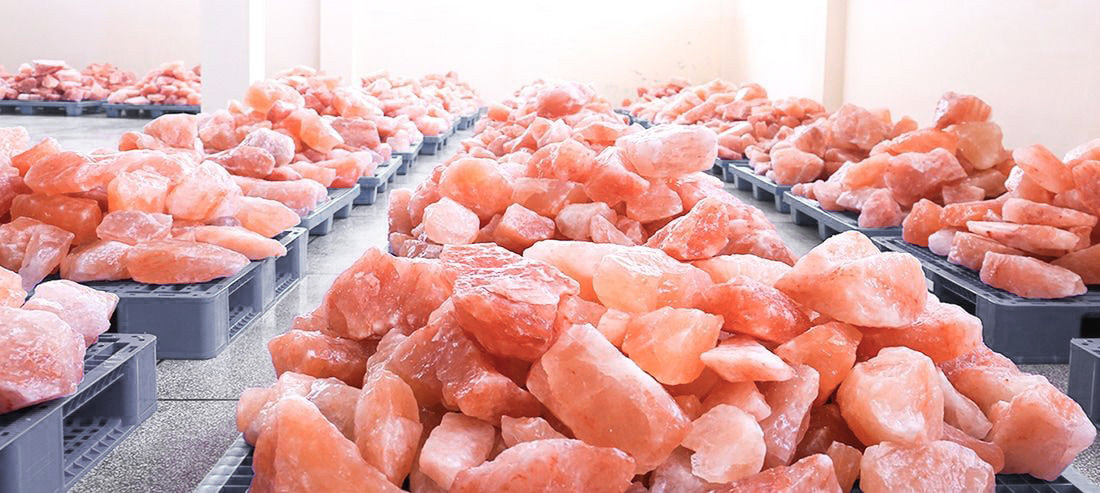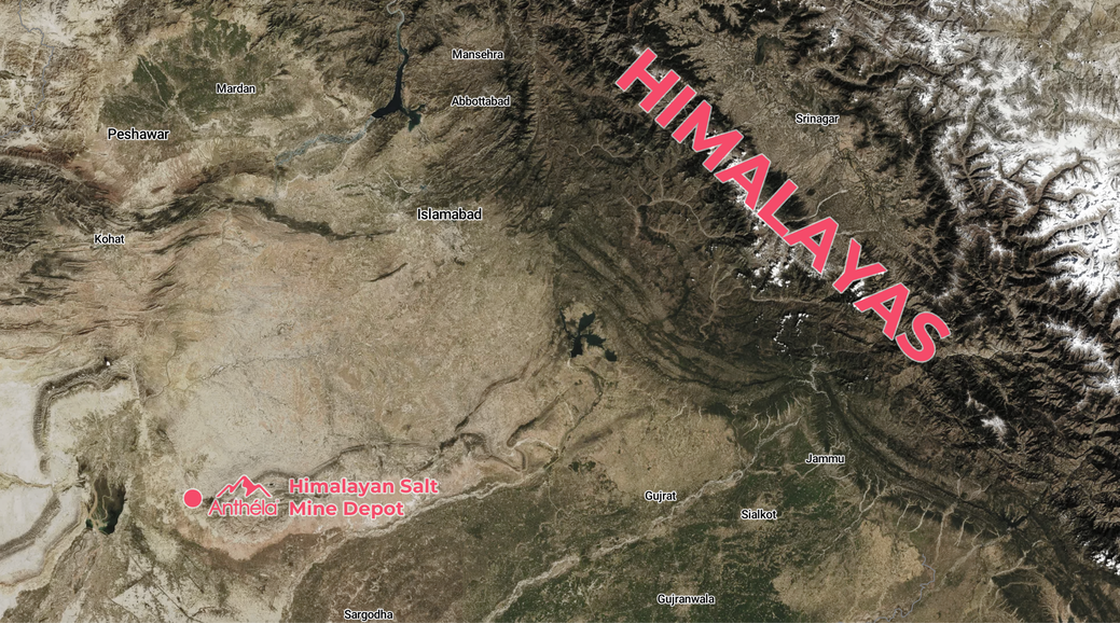1. Why Himalayan salt? Is it better than Table Salt?
Himalayan salt is healthy and safe after maturing over the past 200 million years in an environment of zero exposure to pollutants or chemical impurities. Unlike table salt, which is mostly just sodium chloride (NaCl), Himalayan salt usually contains some amounts of minerals like potassium, iron and zinc.
Anthéla® mission is to replace over processed table salt with a cleaner,healthier alternative with no additives. Salt is the most essential ingredient in your kitchen, never settle for ordinary table salt again.
Anthéla® mission is to replace over processed table salt with a cleaner,healthier alternative with no additives. Salt is the most essential ingredient in your kitchen, never settle for ordinary table salt again.
2. Why is grading Himalayan Salt Needed?
Not all Himalayan salt mines are suitable for human consumption and among those there are vast differences in quality.
Anthéla® is the first to establish Himalayan salt grading standards to ensure our product’s purity and quality in the world.
These grading levels are based on 4 criteria:
• NaCl Content
• Undissolved Substances
• Color
• Surface Cleanliness
Our salt is categorized into 5 grading levels: Grade C, Grade B, Grade A, Grade AA, Grade AAA. Anthéla® only allows Grade AA, Grade AAA.
Anthéla® is the first to establish Himalayan salt grading standards to ensure our product’s purity and quality in the world.
These grading levels are based on 4 criteria:
• NaCl Content
• Undissolved Substances
• Color
• Surface Cleanliness
Our salt is categorized into 5 grading levels: Grade C, Grade B, Grade A, Grade AA, Grade AAA. Anthéla® only allows Grade AA, Grade AAA.
3. Why such serious cleaning methods?
Himalayan salt is recognized as the purest salt. However, contaminants can enter irregular surfaces and cracks during mining, transportation, and stocking. If the salt is not cleaned properly, contaminants will enter the salt.
Anthéla® has invented the world’s first Ultrasonic-Tech and RO Purified Water cleaning technology to cleanse rock salt. Using our Ultrasonic cleaning technology, we thoroughly cleanse the salt of the foreign material leaving only pure and natural salt.
Anthéla® has invented the world’s first Ultrasonic-Tech and RO Purified Water cleaning technology to cleanse rock salt. Using our Ultrasonic cleaning technology, we thoroughly cleanse the salt of the foreign material leaving only pure and natural salt.
4. Why is Himalayan salt pink?
The pink color of Himalayan salt is caused by the infusion of iron along with over 80 other minerals within the salt crystal. The richer the iron content, the richer the pinks, oranges and reds appear in the crystal. Geologists claim that the color may also come from the red clay of Cambrian era.
5. Does darker pink mean better quality?
No. The highest-quality Himalayan salt should be nearly transparent. The ‘dark pink color’of salt products on the market results from many impurities. These impurities are insoluble in water and not beneficial to our health at all.
The figure below demonstrates a comparison between Anthéla’s Himalayan salt and other brand’s Himalayan salt dissolved in water.
The figure below demonstrates a comparison between Anthéla’s Himalayan salt and other brand’s Himalayan salt dissolved in water.
6. Does Himalayan salt have a smell?
No. Pure Himalayan salt should not have any smell. The smell of the products on the market is surely abnormal, and comes from contaminated odors during mining and storage. Anthéla’s Himalayan salt and products DO NOT have any smell.
7. Is your Himalayan Salt really from the Himalayas?
Absolutely Yes. 100% of Anthéla®’s Himalayan Salt comes directly from Salt Range,Punjab, Pakistan, West of Himalayas.
8. Does Himalayan salt contain Iodine?
Although Himalayan salt may naturally contain some iodine, it most likely contains less iodine than iodized salt. However, most people do not need extra iodine and can take Himalayan Salt on a daily basis.
For those who have iodine deficiency or are at risk of deficiency may need to source iodine elsewhere. Anthéla cares about your health, and please follow the doctor's advice.
For those who have iodine deficiency or are at risk of deficiency may need to source iodine elsewhere. Anthéla cares about your health, and please follow the doctor's advice.
9. How should I store Himalayan salt?
Please store Himalayan salt at a cool and clean place, and notice: Never store salt in metal containers. Salt leeches metal particles and/or elements out of the metal. You could wind up with a poisonous substance in your salt. Anthéla® offers all kinds of containers perfect for storing Himalayan salt.
10. Why does salt cake?
Without any additives, or anti-caking agents, salt itself will absorb moisture, and cake. Many table salts rely on unnatural additives like sodium ferrocyanide to stop caking.
11. What are the benefits of continued consumption of Himalayan salt?
Himalayan salt is never exposed to any pollution or plastic contaminants, never bleached, and never uses additives. It is a good source of balanced minerals such as Calcium, Zinc, Magnesium and Iron.
12. Why does the Himalayan salt have better flavor?
Superior flavor is a result of never using additives that can cause a bitter flavor and the healthy minerals found in the salt.
13. Why does kimchi made with Himalayan salt taste better than other kimchi?
Himalayan salt contains Calcium, which can increase the crunchiness of food.





